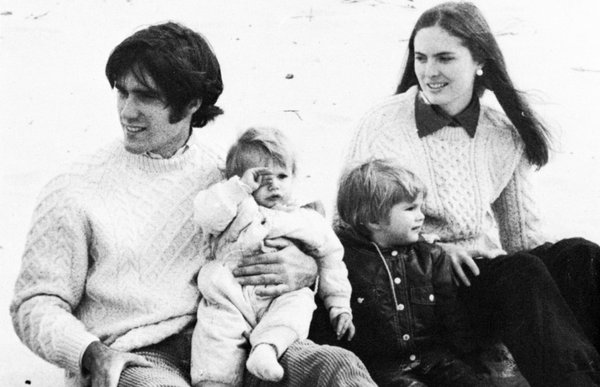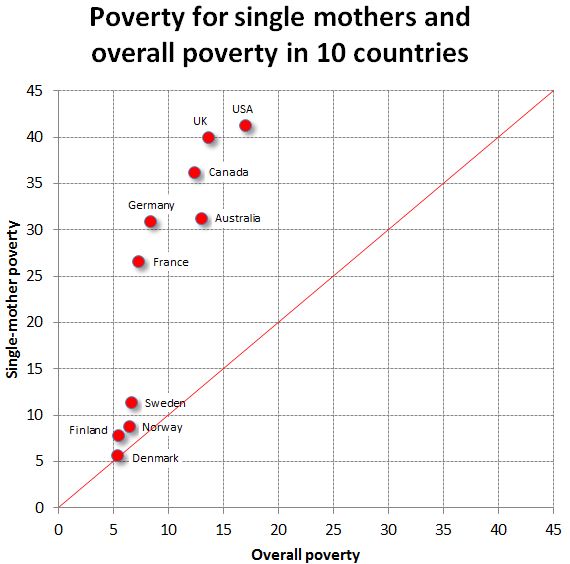Actually, I don't have a war on Ann Romney. Just thought I'd title this piece using the mode o' the day.
Still, I know silly when I see it. So, any support for Ann Romney because of how hard she worked as a stay-at-home-mom is nothing short of ridiculous. Sure, anyone who lives a reasonably decent life deserves average respect and courtesy, especially if they haven't shot someone like Trayvon Martin dead for no good reason, but that doesn't mean there isn't a lot of hypocrisy flying around in the heads of the Romney campaign brain trust. So let's examine this issue in words and pictures:
 |
| The hard years. |
“They were not easy years. You have to understand, I was raised in a
lovely neighborhood, as was Mitt, and at BYU, we moved into a
$62-a-month basement apartment with a cement floor and lived there two
years as students with no income.
“It was tiny. And I didn’t have money to carpet the floor. But you
can get remnants, samples, so I glued them together, all different
colors. It looked awful, but it was carpeting.
“We were happy, studying hard. Neither one of us had a job, because
Mitt had enough of an investment from stock that we could sell off a
little at a time.
“The stock came from Mitt’s father. When he took over American
Motors, the stock was worth nothing. But he invested Mitt’s birthday
money year to year — it wasn’t much, a few thousand, but he put it into
American Motors because he believed in himself. Five years later, stock
that had been $6 a share was $96 and Mitt cashed it so we could live and
pay for education.
“Mitt and I walked to class together, shared housekeeping, had a lot of pasta and tuna fish and learned hard lessons."
--Ann Romney
 |
| Not a stay-at-home mom, not in a "lovely neighborhood." |
Want to examine motherhood, especially single motherhood in the U.S.? Read these statistics from a March, 2012 study by Legal Momentum, The Women's Legal Defense and Education Fund:
Prevalence: Single motherhood is very common. Around half of today’s mothers will spend at least some time as the sole custodial parent. At any one time, almost one quarter of mothers are single mothers.
Characteristics: Around 45% of single mothers have never married, around 55% are divorced, separated or widowed. Half have one child, 30% have two. About two fifths are White, one third Black, one quarter Hispanic. One quarter have a college degree, one sixth have not completed high school.
Employment: At any one time, about two thirds of single mothers are also working outside the home, a slightly greater share than the share of married mothers who are also working outside the home. However, only two fifths of single mothers are employed full-time the entire year, and a quarter are jobless the entire year.
Income: Half of single mother families have an annual income less than $25,000. Median income for single mother families is only one third the median for married couple families. Only one third of single mothers receive any child support, and the average amount these mothers receive is only about $300 a month.
Poverty: Two fifths of single mother families are poor, triple the poverty rate for the rest of the population. The majority of poor children are in single mother families. Child poverty is linked to school dropout; to negative adult outcomes including joblessness and ill health; and to reduced economic output estimated to be about 4% of Gross Domestic Product.
Hardship: Two fifths of single mother families are “food insecure,” one seventh use food pantries, one fifth have no health insurance, one third spend more than half their income on housing. Three quarters of homeless families are single mother families.
Welfare & Food Stamp Receipt: Although two fifths of all single mothers are poor, only one tenth of all single mothers receive cash welfare assistance. Two fifths of all single mothers receive Food Stamps.
Compared to Single Mothers in Peer Countries: The single mother poverty rate in the U.S. is far above the average in high income countries even though the single mother employment rate in the U.S. is also above the average. Less generous income support programs in the U.S. help explain the exceptionally high poverty rate for single mother families in the U.S.
Let's see if we can find a chart that demonstrates how the U.S. compares with other countries like us when it comes to poverty and single mothers:
 |
| I'm glad we're so good at poverty. Oh wait... |
Now, let's revisit our celebrated mother, Ann Romney:
 |
| The young Romney family after the hard times when he had to sell some of his stock to get by. |
“Another son came along 18 months later, although we waited four
years to have the third, because Mitt was still in school and we had no
income except the stock we were chipping away at. We were living on the
edge, not entertaining. No, I did not work. Mitt thought it was
important for me to stay home with the children, and I was delighted.
“Right after Mitt graduated in 1975, we had our third boy and it was
about the time Mitt’s first paycheck came along. So, we were married a
long time before we had any income, about five years as struggling
students. …
"Now, every once in a while, we say if things get rough, we can go
back to a $62-a-month apartment and be happy. All we need is each other
and a little corner and we’ll be fine.”
--Ann Romney
 |
| A single mother at a jobs fair. |
Currently, what's the fate of single mothers in our society?
In 2010, the first full calendar year after the Great Recession,
nearly 41 percent of the nation's single mothers with children under age
18, like Williams, lived on incomes
below the federal poverty line. (Federal poverty measures differ according to family size.)
New data released by the Census Bureau on Tuesday
shows that few Americans fared well in 2010. About 46 million remained
in or fell into poverty. The nation's median income dropped to levels
unseen since the mid 1990s.
But the percentage of single mothers with
children under the age of 18 who are poor outstripped that of almost
every other group.
"We have a long history of distinguishing between the 'deserving
poor' and the 'undeserving poor' in this country,” said Joan Entmacher,
vice president for family economic security at the National Women's Law
Center, a Washington, D.C.-based think tank and advocacy group. "For a
lot of people, single mothers are so far outside their idea of the
deserving poor that they can hardly think straight about what might be
done to help these mothers or the millions of children that live with
them."
In the meantime, where did Ann Romney raise her boys?
 |
| Here in Belmont, Massachusets during the Bain years. |
 |
| Here in La Jolla, CA (they're tearing this down to more than double it in size. |
 |
| And here in Park City, Utah. (Kinda small, though. Only 11 acres. Guess that's why they sold it.) |
|
|
 |
| And here on Lake Winnepesauke, New Hampshire |
 |
| Not here in Boston. Kids were grown. |
WASHINGTON -- For a woman with three houses and sixteen grandkids,
Ann Romney doesn't have very much help around the house, according to
her 2010 tax return.
IRS forms released Tuesday by Mitt Romney's presidential campaign
show that despite reporting income of $21.7 million, the couple paid
only $20,603 in taxable wages for household help in 2010. This figure
was divided among four women: Rosania Costa ($4,808), Kelli Harrison
($8,667), Susan Moore ($2,238) and Valerie Cravens Anae ($4,890).
According to a number of Boston-based domestic staffing agencies, the
salary range for a housekeeper is between $20 and $30 an hour, which
adds up to an annual salary of $40,000 to $50,000 based on forty-hour
weeks and two weeks of paid vacation a year.
But this number is only for one house, and the Romneys have three
houses -- a 2,000 sq. ft. townhouse in Belmont, Mass., a 5,400 sq. ft.
lake house on 11 acres in Wolfeboro, N.H., and a beach house in La
Jolla, Calif., that is undergoing renovations to double its size.
Even if the Romneys avoided spending time in La Jolla in 2010, they
spent plenty of time in New Hampshire, with regular visits in the summer
from five sons and their families.
Yet the Romneys still paid only half of the lowest range of an
average housekeeper's salary, which raises the question of who cleaned
the Romney houses the other 50 percent of the time. A Romney campaign
adviser declined to respond to questions from The Huffington Post about
the housekeeping salaries.
Here's a
link to a story about a nanny/maid, Juanita, that took care of young Ann. Apparently, she had a privileged upbringing. This is getting a little funny.
Here's something not funny:
 |
| Denise Bowie (L), 21, watches her one-year-old daughter Genelle practice walking at Hope Gardens Family Center, a shelter for homeless women and children, run by Union Rescue Mission on 77 acres (0.31 square km) of countryside away from Skid Row, on the outskirts of Los Angeles, California January 25, 2012. REUTERS/Lucy Nicholson |

We can stop worrying about them now.













what's wrong with getting married and going to college?
ReplyDelete